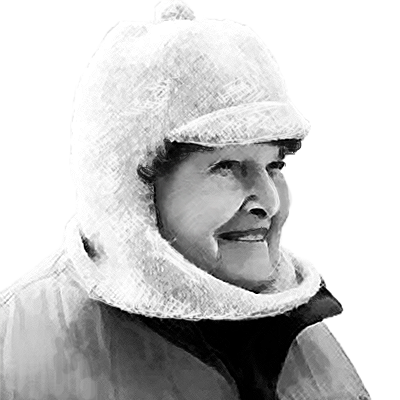Lydia Black

Lydia Black possessed two things that helped bring her academic success in Alaska — a passionate interest in Alaska Native cultures and fluency in Russian.
Using her linguistic talents, Black was able to translate Russian documents that described Alaska Native cultures shortly after contact with the region’s earliest Western colonizers.
Black was born in Kiev, Ukraine, when it was part of the Soviet Union. She eventually arrived in the United States. Her husband, who worked for NASA, died in 1969.
In 1973, the young widow became an anthropology professor in Rhode Island, where she began her Alaska work. The University of Alaska Fairbanks hired her in 1984.
Black became the foremost authority on Unangam and Sugpiaq cultures of the Aleutian and Kodiak islands, respectively. Her most well-known book is “Aleut Art — Unangam aguqaadangin.”
Kodiak Daily Mirror reporter Scott Christiansen, in an article written after Black died in 2007, said she consciously focused on Alaska Natives’ artistic and cultural accomplishments rather than much-discussed social troubles.
“‘They know they have problems. My job is to remind them of their glory,’ is what Black reportedly said of her work,” Christiansen wrote.
After Black retired from UAF in 1998, the Orthodox Church in Alaska awarded her the Cross of St. Herman for her work on the Russian archives of St. Herman’s Seminary in Kodiak. She received the Order of Friendship from the Russian Federation in 2001 for her work on Russian American history.
More online about Lydia Black:
- A brief obituary in the Los Angeles Times
- An Unalaska radio story and interview aired after her death
- A brief profile from the Alaska Women’s Hall of Fame’s inaugural Class of 2009 webpage


